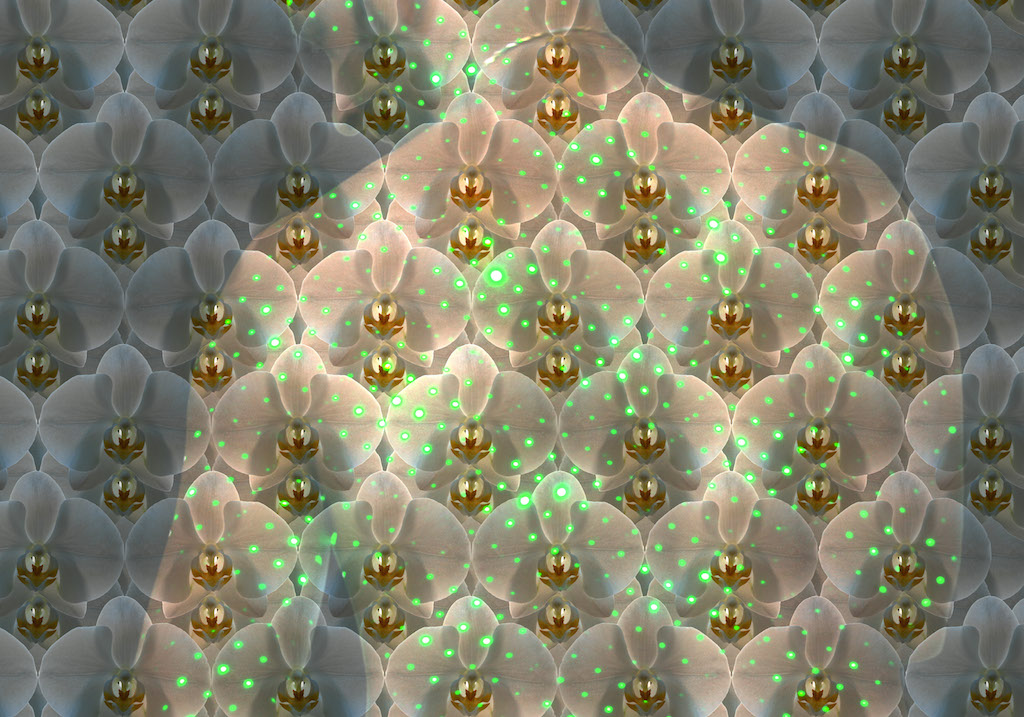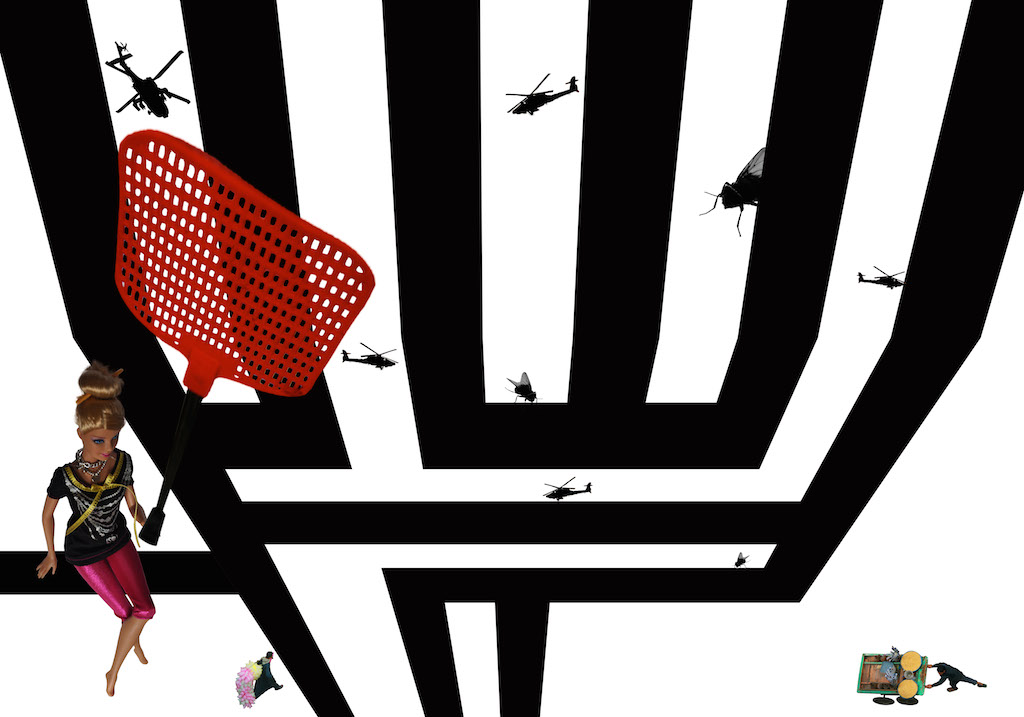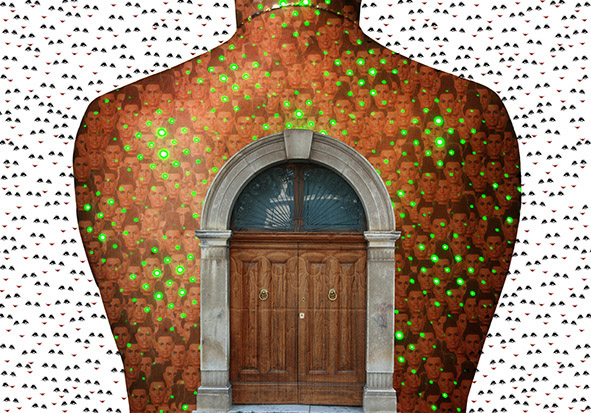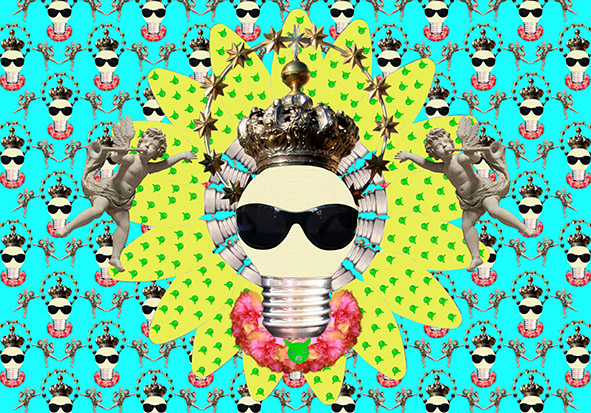Qaram Qart
Restart
until 13 November 2014
Mashrabia Gallery, Cairo
People in Cairo, especially intensely in wust al-balad (central Cairo), are living in a maze imposed by the state. Along with the people, the state is caught in the maze of its own making. And if the state has imposed a maze, social convention sustains its own traps as well.
The exhibition of artist Qarm Qart currently showing at the Mashrabia Gallery in downtown Cairo is the first to focus on the maze. The artist titles his exhibition Restart. It explores the outer physical maze and the mental and emotional mazes people carry inside themselves. The exhibition confronts the reality of the outer and inner mazes both at their most raw and their more subtle levels.
I asked Qarm Qart how he came to work on the maze. He told me: “The idea came from living in wust al-balad. Streets are closed and there are walls everywhere. To go from my home to a somewhere nearby that would normally take five minutes I would have to spend at least twenty minutes. I was going crazy. About a year ago when I was walking down Nubar Street I saw a wall being dismantled. I thought it was a sign that they were going to remove all the walls but I soon realized they were not. In the few places where they tore down the walls they proceeded to put up metal gates. One, for example, is next to the Ministry of Interior. The gates close at midnight. Like in a medieval city.”
Experiencing the constrictions and claustrophobia of the physical maze evoked another kind of maze, “the maze we carry inside ourselves,” Qarm Qart confided. Mazes demand concentration. Just to conduct daily life you need to figure out the physical maze and how to negotiate it. Thinking about the physical maze leads to thinking about the inner maze and connections between the inner and outer labyrinths.
Qarm Qart has lived in wust al-balad Cairo for eleven years and appears to be here for good. He is a Cairene but not an Egyptian. He knows classical Arabic and speaks rapid-fire colloquial. Qarm Qart is the artist name he devised for himself by Arabizing an abbreviation of his given name Carmine Cartolano. Born in the southern Italian village of Buonabitacolo near Salerno, he studied Arabic and Persian at the renowned Instituto Universitario Orientale in Naples. Under the name Carmine Cartolano in 2012 he published a collection of short stories he wrote in colloquial Arabic titled Masriano: Yawmiyyat mussawar Italia Diaries of an Italian Artist. Masriano, a playful confection of Egyptian colloquial and Italian, speaks to his complex identity and life for which no ‘proper’ word exists. Qarm Qart/Carmine Cartolano is part of the young and vibrant transnational culture in Egypt for whom borders are insignificant.
As I sat with Qarm Qart on a bench in middle of his exhibition at Mashrabia he drew my attention to the floor—which I could not see the night of the opening as the place was packed out—where in bold black lines he had drawn a maze. Viewers walk on his floor maze as they look at his works displayed in the two connecting rooms of the gallery space. In one room hang pictures depicting the outer maze and in the other room are portrayals of the inner maze.
Qarm Qart constructs his pictures digitally. He moved away from doing classic collage using paper and scissors to composing on the screen. His pictures with their variegated palettes are at times extraordinarily sharp and at other times richly subtle and blended. He often peppers his pictures with chartreuse dots to evoke the lasers people beam into the dark night during gatherings in the midans and streets.
 [The Orchid Man (2014). Image copyright the artist. Courtesy of Mashrabia Gallery.]
[The Orchid Man (2014). Image copyright the artist. Courtesy of Mashrabia Gallery.]
Among the works grouped in the outer maze room is the picture of The Woman in the Red Shoes. We see from the cropped view of her legs that she is wearing blue sports trousers as she stands in open red shoes with her feet firmly planted on the ground. She is a city woman, a “modern woman,” whose stance asserts confidence and independence. She appears outsized standing in front of the bold lines denoting the maze. Closing in on either side are small white turbaned men resembling beasts with menacing faces and fat red lips (the color of the women’s shoes) brandishing knives. The outer edge of the maze is framed by a mountain scape (composed from a shot the artist took in Sinai). Visible on this plateau are scores of similar men, also wielding knives, hunched as they descend deeper into the maze toward the woman with the red shoes. She holds her ground as the furies spin around her in the battleground of tahharush (sexual harassment). A helicopter so tiny it is almost imperceptible hovers high above.
Helicopters much closer to the ground, together with over-size flies, buzz in a white sky in The Red Fly Swatter Picture. A woman wields a giant red fly swatter ready to strike. In other pictures from within the maze, women, many veiled, briskly go about their business affirming they are part of the urban landscape and are there to stay. Intriguingly, women predominate in the images of the outer maze while men figure more prominently in explorations of the inner maze.
 [The Red Flyswatter (2014). Image copyright the artist. Courtesy of Mashrabia Gallery.]
[The Red Flyswatter (2014). Image copyright the artist. Courtesy of Mashrabia Gallery.]
The inner maze pictures require another kind of scrutiny. I was sitting with the artist on a bench in the inner maze room gazing at a picture with an engrossing mosaic of cool colors wondering what it was all about when suddenly the back torso of a male came into focus before my eyes as they adjusted to the subtle glow of a shape merging in faint highlight. Looking more closely I could see the repeated image of a flower (which the artist identified as an orchid) with a stylized stamen and pistil at its core conjuring up a complex sexual choreography.
Another rendering of the male torso occurs in the picture of The Man with the Wooden Door (2014). It is an image of a male torso depicted without arms. It is covered with barely perceptible veneer of repeating photographs of the head of Barbie doll’s insipid partner Ken like a skin of faded wallpaper and studded with a splash of chartreuse dots. A wooden door framed by stone arch is placed in the center of the torso. Unlike new metal doors in wust al-balad, which are opened and closed, this inner door made of old wood remains tightly shut. Does this door shut out what is going on in outer space or shut in what is happening in interior space? Some viewers with an historical eye might think of a harim door in houses of old designed to keep women in and the world out. The background of the picture is a white field speckled with eyes with long fluttering lashes and free-floating red lips. Are they the disembodied female buzzing round the male? Are they flirting or mocking? Or, perhaps, simply enjoying disembodied freedom?
 [The Man with the Wooden Door (2014). Image copyright the artist. Courtesy of Mashrabia Gallery.]
[The Man with the Wooden Door (2014). Image copyright the artist. Courtesy of Mashrabia Gallery.]
 [The Light Bulb (2014). Image courtesy of the artist. Courtesy of Mashrabia Gallery.]
[The Light Bulb (2014). Image courtesy of the artist. Courtesy of Mashrabia Gallery.]
In the passage leading into the main gallery space hangs a lone picture. The Light Bulb (2014) appears to belong neither to the space of the outer maze or the inner maze. The light bulb sports dark sunglasses of a shape often in evidence in media shots. On the light bulb head, of bright wattage, sits an ornate crown of metal topped with a globe. Encircling it above is a soaring loop of a metal halo with stars, perhaps borrowed from an old military jacket. Another halo resembling a garland of yellow flowers surrounds the light bulb. Closer inspection reveals the petals to be smaller oblong light bulbs assembled to form the floral ring. Placed around ‘the neck’ of the big light bulb is a collier fashioned out of pink feathers (from a feather duster so the artist disclosed). The light bulb is flanked on either side by a cherub holding a trumpet. The whole light bulb ensemble repeats against a background sea of turquoise. The artist pushes our imagination. What does The Light Bulb have to do with the maze? Perhaps the sunglasses hold a clue.
Qarm Qart provokes viewers to think, to imagine—to look through a periscope around the corner. He provides seductive patterns and odd juxtapositions to help us break through grids imposed in inner and outer spaces as we live in the era of the maze and in range of helicopters and fly swatters.